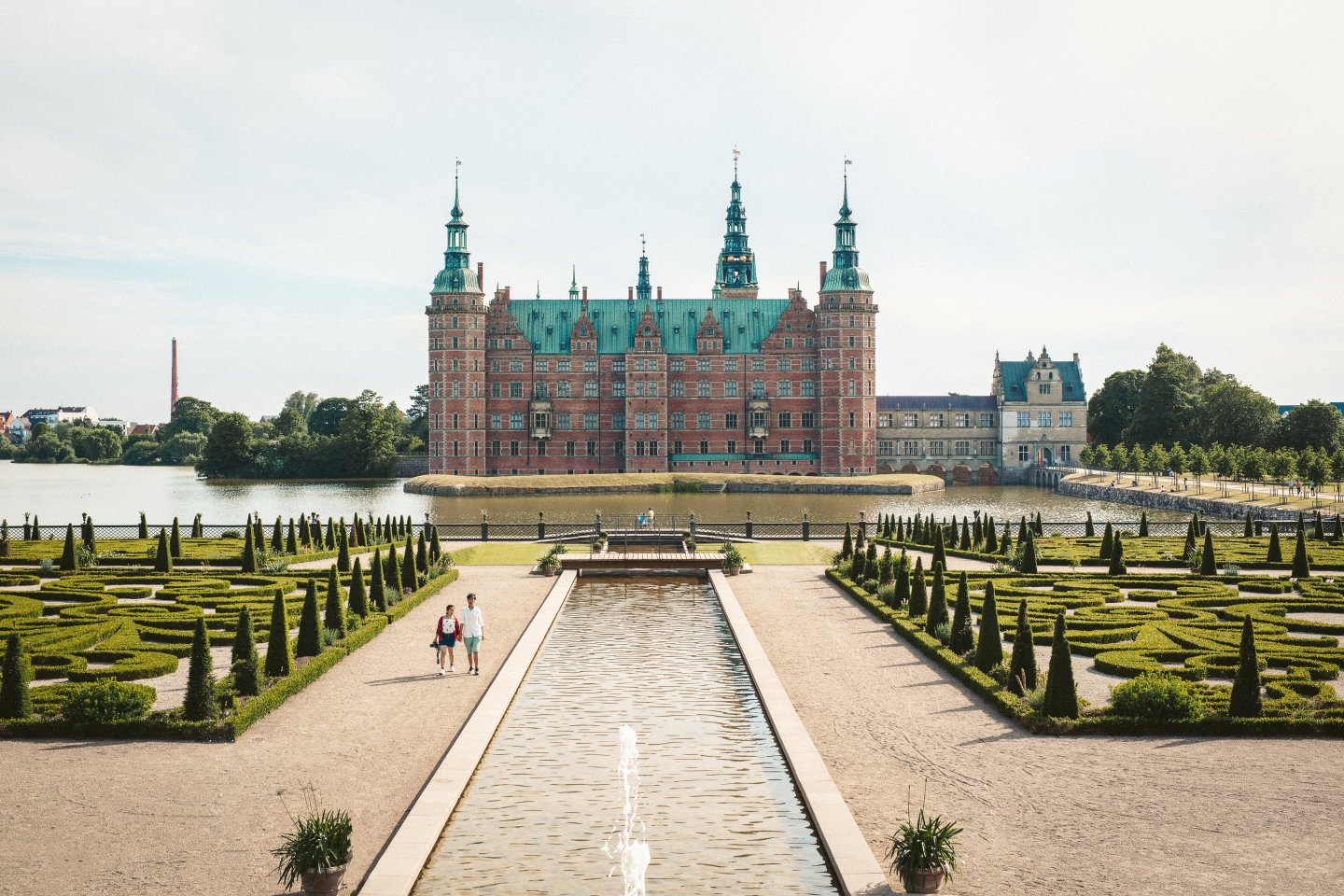The remarkable Danish castle that I hold dear above all others is Egeskov Slot, which showcases its majestic stature, meticulously groomed grounds, numerous towers, and overall grandeur.
Denmark boasts other notable castles, palaces, and historic manor houses, which we present below for your enjoyment.
Related: Finest Mansions of Rhode Island | Best Castles in Romania | Exquisite Italian Castles | Majestic Castles in Japan
1. Copenhagen’s Amalienborg Palace, Denmark

The splendid Amalienborg encompasses four identical palace facades adorned with rococo elegance. These palaces—Christian VII’s Palace, Christian VIII’s Palace, Frederick VIII’s Palace, and Christian IX’s Palace—were intended as the Danish royal family’s dwelling. Originally constructed for four noble families, it was later acquired by the royal family when Christiansborg Palace succumbed to flames.
Details about Amalienborg Palace
Where: Copenhagen, Denmark
Erected: 18th Century
Architect: Nicolai Eigtved
Architectural Style: Rococo
Present Use: Residence of the Danish royal family
Current Owner: Danish Royal Family
2. Augustenborg Palace in Sønderborg, Denmark
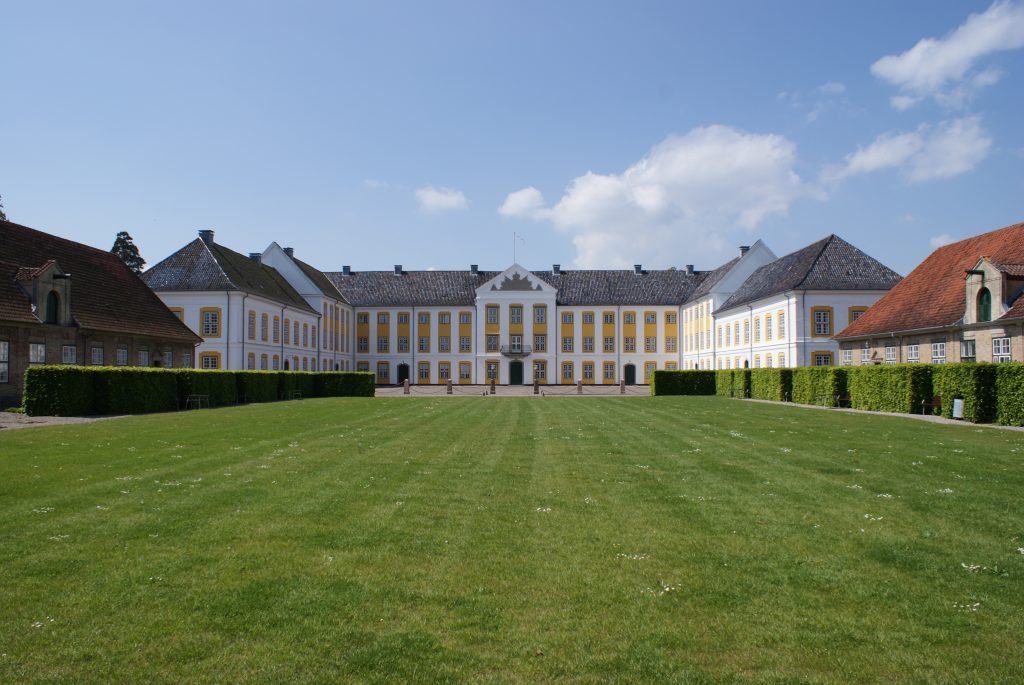
Rococo-inspired Augustenborg Palace, located in Sønderborg Municipality, was commissioned by Ernst Günther, the first Duke of Augustenborg, and built between 1660 and 1664. This palace was named after his wife, Princess Augusta von Glücksburg. After the departure of the last duke in 1848, the palace transformed into a military hospital and barracks before serving as a psychiatric hospital for over 75 years. Presently, it houses the offices of agricultural authorities.
Details about Augustenborg Palace
Where: Sønderborg Municipality, Denmark
Constructed: 1660-1664
Builder: Ernst Günther
Architectural Style: Rococo
Present Use: Office of the agricultural authorities
Current Owner: Danish State
3. Christiansborg Palace in Copenhagen, Denmark
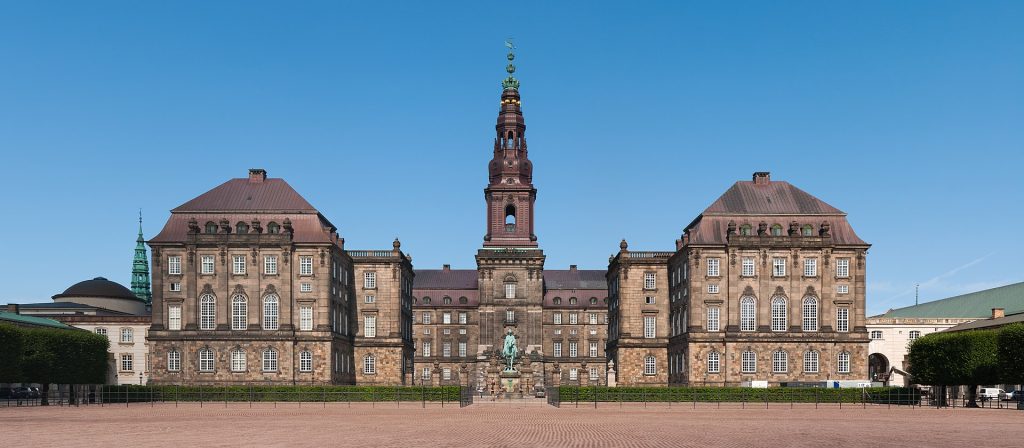
Christiansborg Palace stands as the seat of the Danish Parliament, the Danish Prime Minister’s Office, and the Supreme Court of Denmark. Situated in the heart of Copenhagen, it holds the distinction of being the only structure worldwide that houses all three branches of government: executive, legislative, and judicial. Constructed in Baroque, Neoclassical, and Neo-baroque styles, the palace was led by architects Elias David Häusser, Christian Frederik Hansen, and Thorvald Jørgensen.
Details about Christiansborg Palace
Where: Copenhagen, Denmark
Built: 1907-1928
Architects: Elias David Häusser, Christian Frederik Hansen, Thorvald Jørgensen
Architectural Style: Baroque, Neoclassicism, Neo-baroque
Present Use: Seat of the Danish Parliament, the Danish Prime Minister’s Office, and the Supreme Court of Denmark
Current Owner: Danish State
4. The Commander’s House in Copenhagen, Denmark

Nestled within Kastellet, one of Northern Europe’s best-preserved star fortresses constructed on October 30th, 1664, lies The Commander’s House. This house served as the residence for the commander of Kastellet and was erected in 1725, showcasing exquisite Baroque architectural elements crafted by the renowned architect and primary builder Elias Häuser.
Details about The Commander’s House
Where: Copenhagen, Denmark
Built: 1725
Architect: Elias Häuser
Architectural Style: Baroque
Present Use: Official residence of the Danish Chief of Defence
Current Owner: Danish State
5. Funen’s Egeskov Slot Castle, Denmark

Egeskov Slot Castle, located in Funen, Denmark, is an incredibly romantic castle encircled by a moat and adorned with one of the country’s most enchanting gardens. Built in the 16th century in Renaissance style by Frands Brockenhuus, it underwent alterations during the 19th century when the Swedish architect Helgo Zettervall added a Gothic exterior. Presently, the castle houses multiple museums and warmly welcomes the public.
Details about Egeskov Slot Castle
Where: Funen, Denmark
Constructed: 16th century
Builder: Frands Brockenhuus
Architectural Style: Renaissance
Present Use: Home to multiple museums and open to the public
Current Owner: Danish State
6. Hermitage Hunting Lodge in Dyrehaven, Denmark
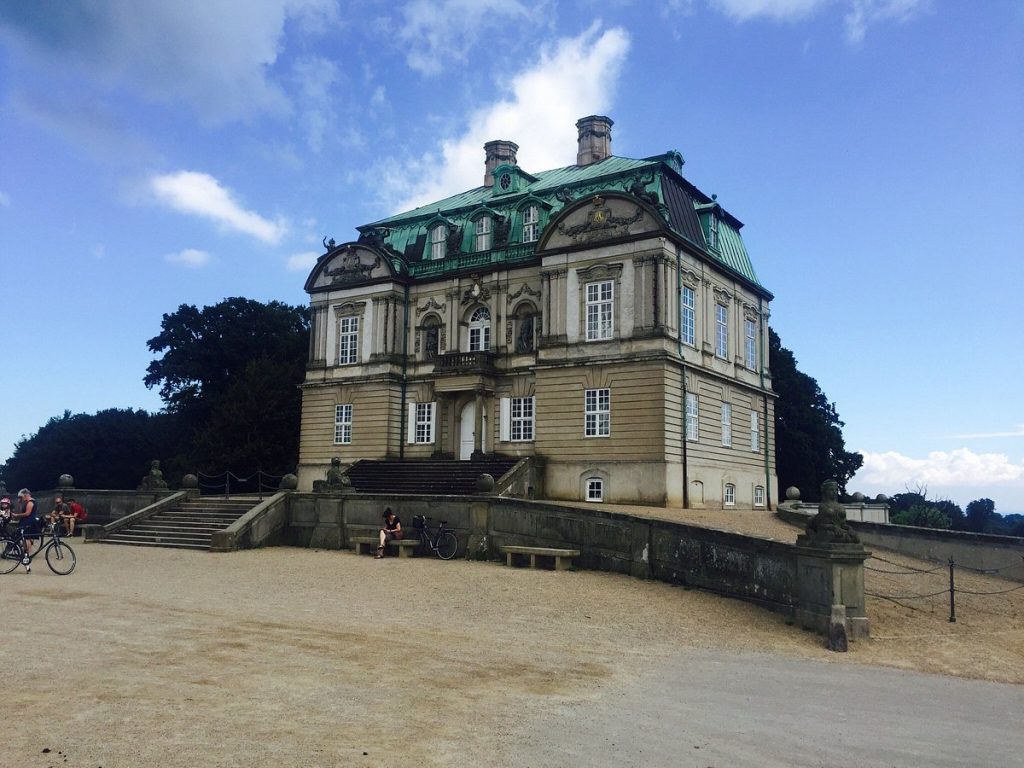
Architect Lauritz de Thurah crafted the Hermitage Hunting Lodge in Baroque style from 1734 to 1736, commissioned by Christian VI of Denmark. Its primary purpose was to host royal banquets, rather than serve as a residence. Today, the Agency for Palaces & Cultural Properties oversees the castle, ensuring it remains accessible to the public.
Details about the Hermitage Hunting Lodge
Where: Dyrehaven, Denmark
Built: 1734-1736
Architect: Lauritz de Thurah
Architectural Style: Baroque
Present Use: Open to the public
Current Owner: Agency for Palaces & Cultural Properties
7. Fredensborg Palace in Fredensborg, Denmark
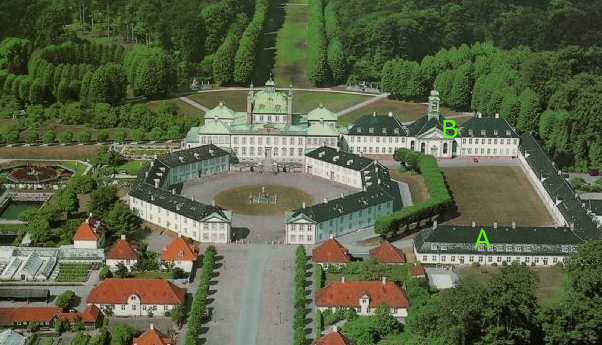
Situated in Fredensborg, Denmark, Fredensborg Palace serves as the Danish Royal Family’s primary spring and autumn residence. Architect Johan Cornelius Krieger, who was the royal gardener to the court at Rosenborg Castle, constructed this French-inspired Baroque palace upon the orders of King Frederick IV.
Details about Fredensborg Slot
Where: Fredensborg, Denmark
Built: 1720-1753
Architect: Johan Cornelius Krieger for King Frederick IV
Architectural Style: Baroque, Dutch Baroque, Rococo
Present Use: Residence of the Danish Royal Family
Current Owner: Danish Royal Family
8. Frederiksborg Castle in Hillerød, Denmark
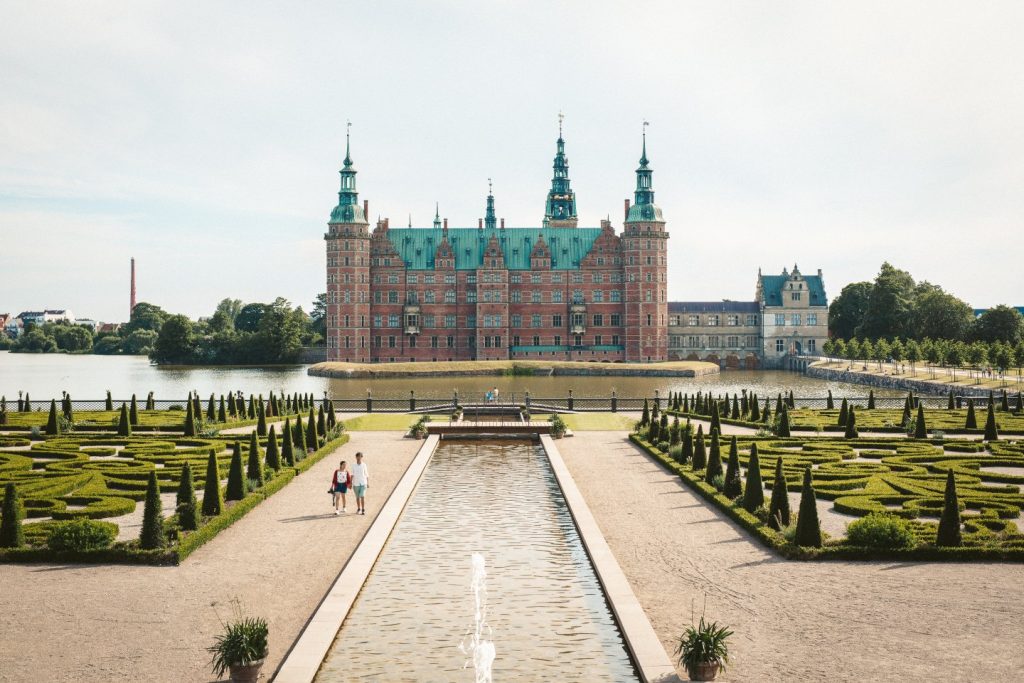
Originally erected as the royal residence for King Christian IV of Denmark-Norway in the early 17th century, the grand Frederiksborg Castle surpassed its predecessor and became the largest Renaissance abode in Scandinavia. In 1859, a catastrophic fire caused extensive damage, but thanks to public support and the contribution of brewer J. C. Jacobsen, the castle was rebuilt and restored by 1882. It reopened to the public as the Danish Museum of National History.
Details about Frederiksborg Castle
Where: Hillerød, Denmark
Built: 17th century
Builder: King Christian IV of Denmark-Norway
Architectural Style: Renaissance
Present Use: Danish Museum of National History
Current Owner: Danish State
9. Graasten Castle in Gråsten, Denmark

Gråsten Palace, renowned as the summer residence of the Danish Royal Family, stands in Gråsten within the southern Jutland region of Denmark. Its origins date back to the mid-16th century when it was initially established as a hunting and leisure castle. In 1842, the main building was added, alongside the castle church.
Details about Graasten Castle
Where: Gråsten, Denmark
Built: 1842
Builder: The Danish Royal Family
Architectural Style: Baroque
Present Use: Summer residence of the Danish Royal Family
Current Owner: Danish Royal Family
10. Kronborg Castle in Helsingør, Denmark

Kronborg Castle, erected in the 1420s by Danish King Eric of Pomerania, stands as a formidable fortress and stronghold. Recognized worldwide as the setting of Shakespeare’s Hamlet, this castle was tragically destroyed by fire in 1629 but was rebuilt under the reign of King Christian IV. Towards the end of the 18th century, it ceased to serve as a royal residence and was repurposed as the barracks for the Royal Danish Army. Following renovations in 1923, the castle opened its doors to the public.
Details about Kronborg Castle
Where: Helsingør, Denmark
Built: 1420s
Builder: Danish King Eric of Pomerania
Architectural Style: Renaissance
Present Use: Open to the public
Current Owner: Danish State
11. The Nyborg Slot in Nyborg, Denmark
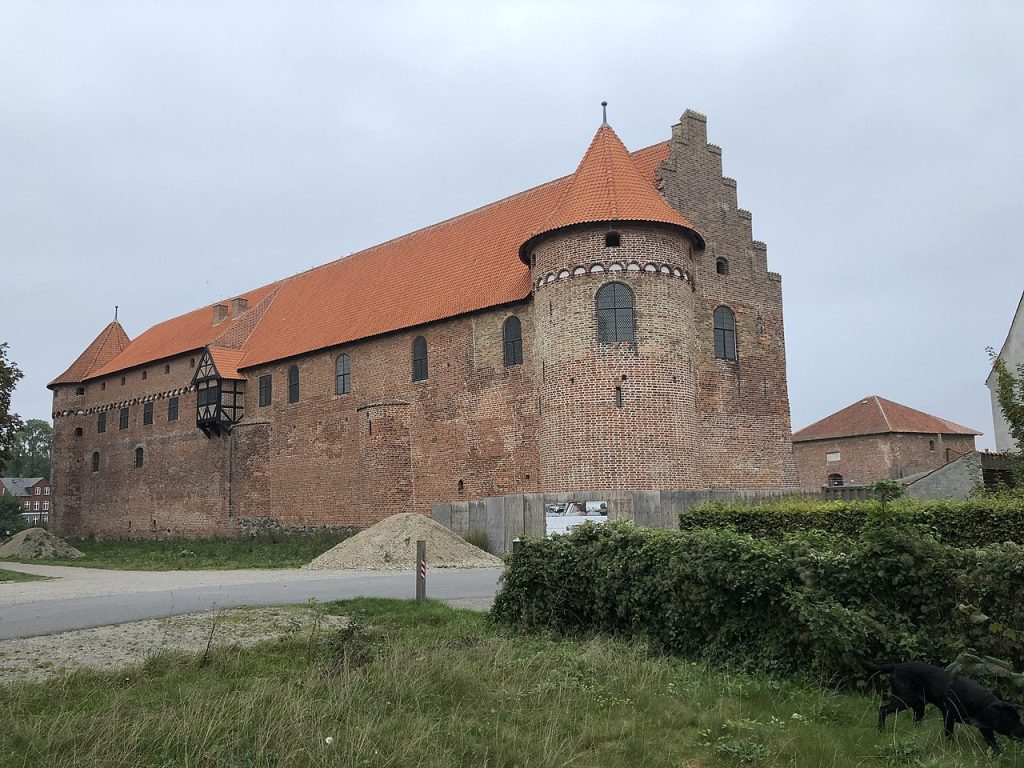
The Nyborg Slot, a historic medieval castle, holds great significance as the location where King Eric V Klipping signed Denmark’s first constitution in 1282. It also served as the venue for the Danehof, the country’s inaugural parliament. Originally constructed in the 12th century, the castle underwent significant modifications over the following centuries. Unfortunately, it suffered severe damage during the Dano-Swedish War in 1657–58. However, it was meticulously restored between 1917 and 1923 by Mogens Clemmensen, and today it stands as a museum open to the public.
Details about Nyborg Slot
Where: Nyborg, Denmark
Built: 12th century
Builder: Unknown
Architectural Style: Medieval
Present Use: Open to the public / Museum
Current Owner: Danish State
12. Rosenborg Castle in Copenhagen, Denmark
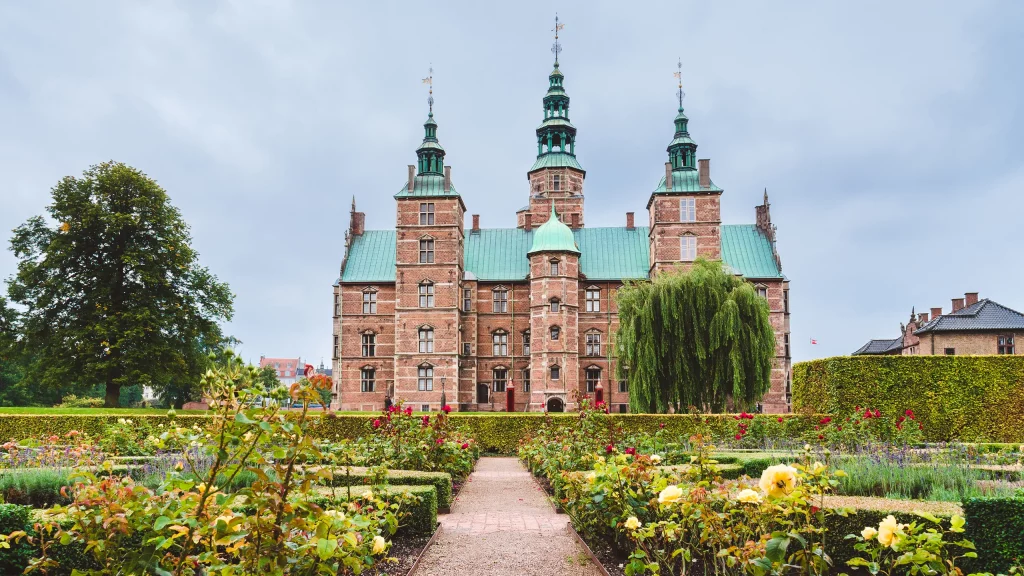
Situated in Copenhagen, Denmark, Rosenborg Castle was originally constructed in 1606 as a country summerhouse and serves as an exemplary representation of King Christian IV’s architectural endeavors. The construction adheres to Renaissance style, with architects Bertel Lange and Hans van Steenwinckel the Younger at the helm.
Details about Rosenborg Castle
Where: Copenhagen, Denmark
Built: 1606
Architects: Bertel Lange and Hans van Steenwinckel the Younger
Architectural Style: Renaissance
Present Use: Open to the public / Museum
Current Owner: Danish State
13. Sorgenfri Palace in Lyngby-Taarbæk, Denmark

Sorgenfri Palace, located on the site of a medieval settlement, stands as a regal abode for the Danish monarch. Situated in Lyngby-Taarbæk Municipality, this palace was constructed in the 18th century, showcasing elements of Baroque and Neoclassical architecture. During the Second World War, the royal family sought refuge within its walls. The palace’s park is presently open to the public.
Details about Sorgenfri Castle
Where: Lyngby-Taarbæk, Denmark
Built: 18th century
Architectural Style: Baroque and Neoclassical
Present Use: Residence of the Danish monarch
Current Owner: Danish Royal Family
These are just a few of the remarkable castles and palaces that grace Denmark’s landscape, each with its own unique charm and historical significance.
